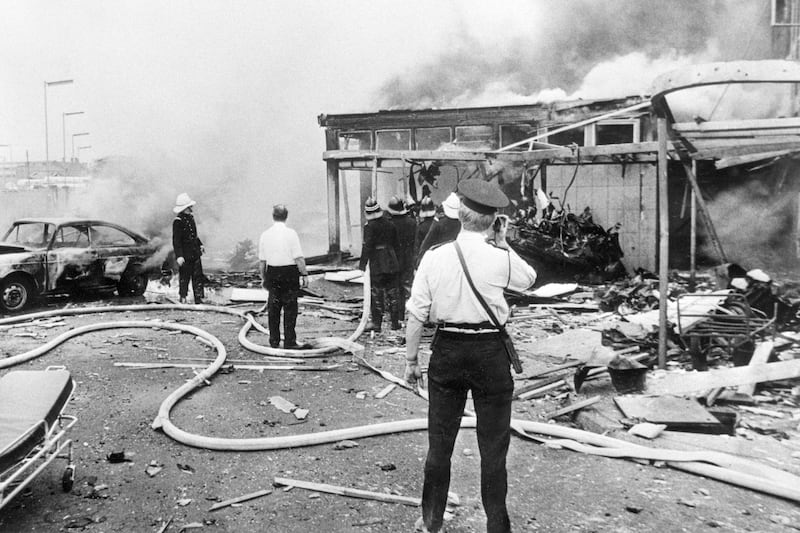“We hate our home,” says Prof Paul Dunlop, and he is speaking for many families scattered across north Donegal. Over the past three years, the Derry man has balanced his professional life as a glaciologist with an intense and often fretful investigation into the defective blocks that are steadily and irreversibly ruining the family home.
He is research director at Ulster University’s school of geography and environmental sciences, based at the Coleraine campus. He lives with his wife Siobhán and children Molly (22) and Oisin (15) in a housing development in Buncrana, where all 49 homes are effectively condemned and will ultimately be demolished. The Dunlops have already had approval in principle for a complete demolition and rebuild. But it is an exhausting process.
“The only thing I want to salvage when it is knocked is… we have markings where we mark the height of our kids and have the dates written beside them. In the wood. That is the only thing I want to take out of our house. Because it is nothing but an absolute anchor around our neck. And that is the truth. It has destroyed our life and I want it gone.”
It’s a sunny, breezy day by Lough Atalia. The Dunlops are in Galway to celebrate Molly’s graduation and to visit Siobhan’s parental home. Galway is an old stomping ground and, for the weekend, a rare escape from the issue which has blighted their quality of life. “Issue” is a neutral word. Dunlop has, by accident more than design, become a passionate spokesman for families whose daily – and nightly – lives have been psychologically reconfigured by seeing and hearing the walls of their house slowly crack and crumble. He believes what has happened in homes across Donegal and other parts of Ireland is wrong and that the burden of coping has fallen to blameless victims.
READ MORE
“This is always at the front of my mind,” he says. Although he retains the lean athleticism carved out through endurance pursuits, he rarely has time for such pursuits now.
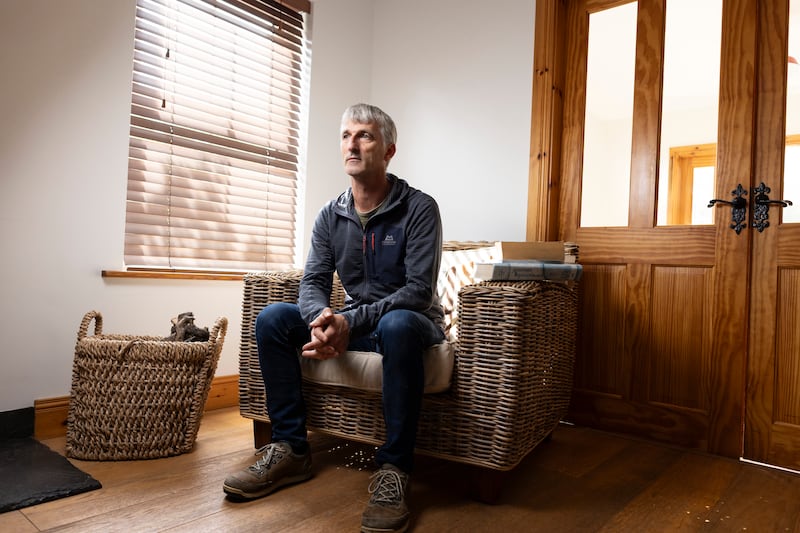
“I never forget about this. I’m a family man who is caught up in it. I’m also an activist now trying to highlight the cause internationally and nationally, because this is a massive issue and far from limited to Donegal. I’m trying to encourage the Government to do the right thing and fix people’s homes. And also to pursue the offenders responsible for this. Because there has been a complete failure in accountability.
“Ultimately, it’s a very depressing situation. Because you know your home has failed. That’s the first thing: it’s, you know, it’s not structurally sound. ‘Home’ is meant to be a place where you live out your dreams, and you sit around a kitchen table, and you plan your holidays, and you plan your kids’ futures, and you decide what you’re going to do at the weekend. All that we do in our homes now is wonder: how are we going to get out of this?”
It wasn’t always that way. Seven years have passed since Dunlops sat at home and watched, with grim fascination, Rita O’Reilly’s Prime Time investigation Bad Blocks, detailing the issue of homes in Donegal with exterior walls that were crumbling in a way that was shocking. The slow nightmare of it all stuck with him. Like most people watching, he then offered silent thanks that it wasn’t his house.
Geek-mode
Dunlop spends much of his working life trying to understand what the Earth was like during the Ice Age. As a geographer, his area of expertise lies in understanding both the formation and movement of the glaciers and continental ice sheets which shaped much of the earth’s surface. He can cheerfully and unabashedly switch into geek-mode when asked to persuade why ancient and long-vanished ice patterns matter so much.

“Ice age and glaciers are like the barometers in your home that tell you if it is going to rain or be a warm dry day. They are climatically controlled environmental systems. By understanding how ice ages work through time, they give you a very rich geological record of long-term climate change. Much of the research I do has been looking into that – how they grow, where the outer limits were. How fast they retreat. And what is driving these processes – is it ocean heating, is it sun cycles?
“We have large climate models to try and predict future weather cycles. And one way we can calibrate these future prediction models is if they can grow and shrink ice sheets the way we see on the landscape that we map through time accurately, then it suggests that the models are probably doing the right thing and can give you a reasonably good forecast into the future. So, the research I’ve been doing over the past 20 years has been mostly linked to that.”
[ Ireland's Ice Age uncoveredOpens in new window ]
[ Where did Irish animals live during the Ice Age?Opens in new window ]
Some of Dunlop’s work requires long periods using satellite imagery and data to map large-scale systems. With that panorama, he can gauge the long-defunct corridors of fast ice flow and identify where the sea was butting against the land. “It is like reconstructing a crime scene,” he says. He was part of a team that went to Newfoundland using a sonar system to map the seafloor so they could identify the same kind of glacial landforms found offshore. Sediments were collected from the seabed for analysis and dating.
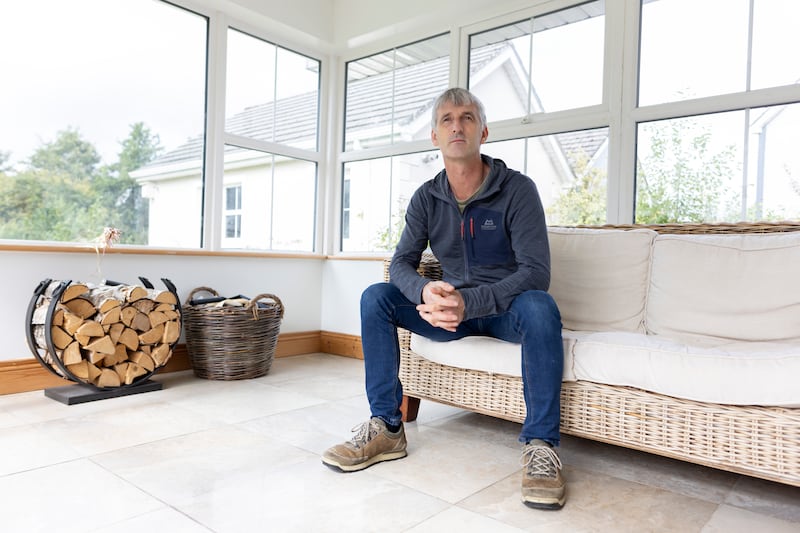
He has spent weeks in Salluit and Nunavik, Inuit villages in Arctic Canada that served as bases for cosmogenic dating expeditions. A helicopter crew dropped the group to the relevant points on the ground and returned them to Innuit huts in the evenings. Dunlop’s work offers a rare facility for understanding and seeing the earth as it was tens of thousands of years ago as opposed to the usual confines of a lifespan or two.
The planet doesn’t need us. But we absolutely need it. And unfortunately, we are living in an era where science has been diminished by online conspiracy theories even though the quality of science has increased
— Paul Dunlop
There’s a chatty lunch crowd and weekend traffic building where we sit but Dunlop can effortlessly slip into a world of endless white. Speaking quickly, he explains that the last ice sheet here covered all of Scotland and half of England, then slid across the Irish Sea into the north of Ireland until the entire island was covered by ice.
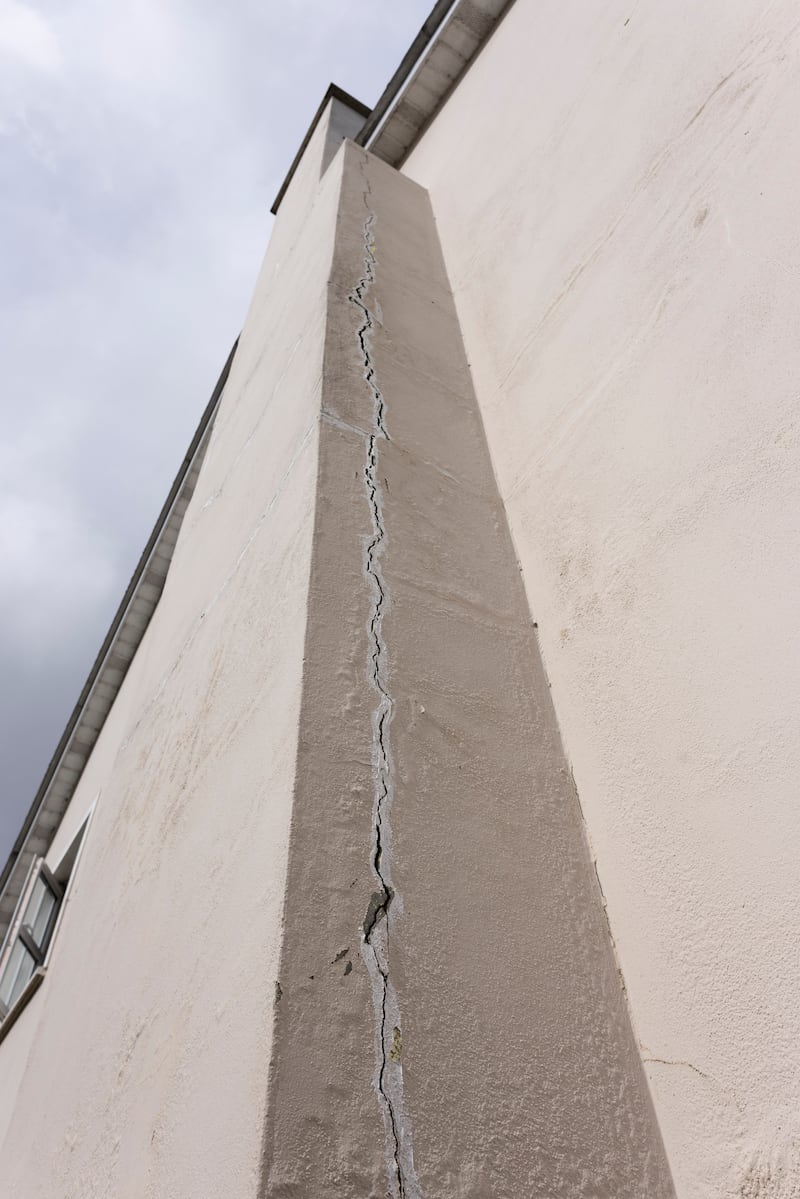
“Ice sheets are very destructive systems. It grinds up all this bedrock as it moves. The ice here went about 100 miles beyond the coastline. Imagine the weight of that on the land! Then it leaves all this rock on the land as it retreats.”
Spending so much mental time studying that period has had the inadvertent effect of making Dunlop acutely aware of where he – and all of us – fit into the bigger picture. His broad view of the present and future weather events chimes perfectly with the loudening concerns of climatologists who are becoming frustrated and perplexed by international apathy to the increasingly stark messages.
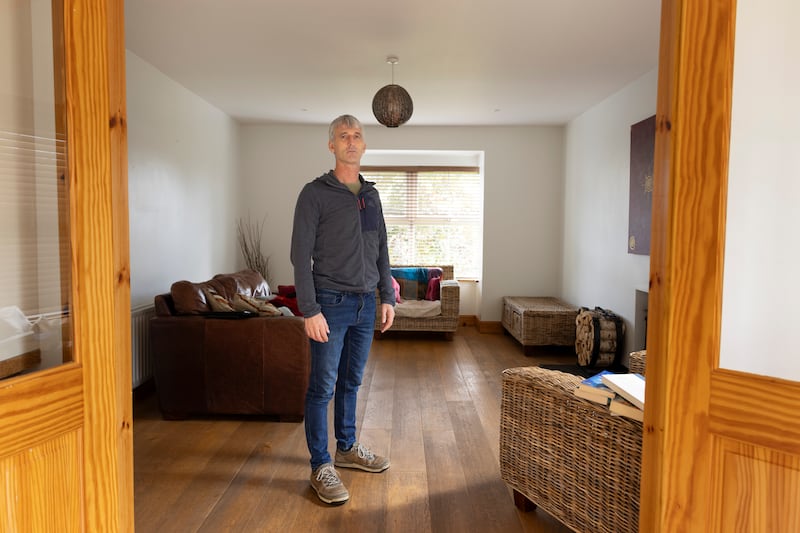
Small cracks
“I am worried, yeah. There is nothing in our recent history in the last sort of Paleo record, or the actual record that we measure that can explain the degree of climate change, except for the increase of greenhouse gases. And when you look at the record from the 1800s, almost, it’s just a huge jump. So, for me, the controversy isn’t the point that we’re heating up. It’s the indifference of people who need to get on board or the people who are saying, ‘Well, I’m not causing this.’ Planet Earth doesn’t need us. It will quite happily spin on axis until at some point in time – [the galaxy] Andromeda is coming towards our galaxy so at some point in time we are going to collapse into each other and consume each other. The planet doesn’t need us. But we absolutely need it. And unfortunately, we are living in an era where science has been diminished by online conspiracy theories even though the quality of science has increased. No matter how loudly we communicate, the YouTube videos seem to shout louder.”
About three years after the Prime Time programme, the Dunlops began to notice small cracks appearing on the walls of their home. In 2020, they paid €6,000 to have an engineer’s test carried out and it confirmed the presence of mica in their home. By then, the mica issue affecting hundreds of homeowners in towns across the county had become a prominent news story. In the beginning, the couple remained optimistic that it was a problem they could manage.
“Our thinking was: at least if the inside is nice, we can deal with the outside thing. It will just be a case of doing the outside blocks and it will be a case of costing us maybe €15,000 on top of the grant scheme. Then the engineers report came back.”
Their report specified the presence of mica but also another mineral in the concrete samples: pyrrhotite. Further testing would be required – again at the Dunlops expense. But the presence of mica was so severe that the report recommended demolition, so there was no real point in further testing. Their house was doomed.
Still, he was curious about pyrrhotite. That report marked the beginning of a grim, steadfast period of research for Dunlop into the other defective minerals found in blocks. Evening reading became material such as the European Regulation for Concrete Aggregates or EN12620, published in 2002. He ascertained that those regulations became applicable in Ireland on January 1st, 2004. Many of the compromised houses built subsequently, he says, failed to meet that standard.
“Pyrrhotite is actually one of the most destructive things you can have in concrete,” he says now. As their house continued to deteriorate, he began to learn more about pyrrhotite. Like mica, the mineral is found in the phyllite bedrock found in Donegal. Once the bedrock is quarried and crushed into aggregate, the minerals are released. Having spent years pondering unfathomable ice sheets, his free-time obsession was reduced now to the composition of the blocks used to build his home and those of his neighbours.
We’d always say this is not your worry, your job is to go to school, get to college, go out with your friends. But they see us. They’d come in and say: are youse talking about mica again?
— Paul Dunlop
“What pyrrhotite does is when it comes into contact with moisture and oxygen, it rusts, because these minerals are made from iron and sulphur,” he explains. Dunlop speaks with the clarity of an experienced lecturer.
“And when that sulphur is released into the cement block, it mixes with moisture to create sulphuric acid. So, now you have an acid in a highly alkaline environment. It creates salts which cause swelling and cracking and ultimately causes the crumbling concrete blocks that we have all seen.”
Constant anxiety
The rain-lashed winters in Donegal accelerated the process of deterioration. In 2019, Dunlop painted the interior of his house, filling in the various cracks that had begun to appear. The family remembered, for a short while, what their home had felt like when life was normal. Within a year, the existing cracks had re-established themselves on the interior walls and new ones had crept in. Although they are not worried about the place literally falling in on them, several neighbours do have that fear and live with metal poles to reinforce supporting walls. Other families have rooms considered no-go areas. Add to that the practical problems of insurance woes and the wait for approval in the redress scheme and the days become a cycle of low-grade, constant anxiety. Throughout, the Dunlops tried to shield Molly and Oisin from the gathering stresses brought about by the problem.
“We’d always say this is not your worry, your job is to go to school, get to college, go out with your friends. But they see us. They’d come in and say: are youse talking about mica again?”
In addition to carrying out independent research, Dunlop began to assemble a field of experts to visit the county and offer their opinion. As a case study, the homes in Donegal were fascinating and he recruited people with serious reputations. He successfully applied for funding from the Geological Survey of Ireland and felt at least that the science-based evidence gave other homeowners tangible evidence of why this had happened. And it gave them a voice.
“This is the worst in all of the world that I have ever seen – and I have seen a lot. In one decade, you have fixed 14 homes and we have fixed 600,” Debbie McCoy, from the “Concrete Queens Campaign in Connecticut” group told Eileen Magnier in an RTÉ news report during a group visit in 2021. Dr Andress Leeman, of the Swiss Federal Laboratories for Materials and Science Technology, said he could not understand “why there is not a streamlined process that permits people to get the funding to demolish and build houses”.
In March of this year, Leeman co-authored a peer-reviewed report with Dunlop and a range of academics in the field, including Dr Beat Münch of Empa’s Laboratory for Concrete and Asphalt in Switzerland. The article – The Mica Crisis in Donegal – A case of Internal Sulphate Attack? – establishes the ruinous effect of pyrrhotite in the blocks. That finding complicates the mica-based freeze-thaw process proposed by a government report in 2017, which was incorporated into the National Standards Authority of Ireland (NSAI) testing and remediations standard IS 464. And the fact that the cause of the defective blocks is not simply a mica problem leaves Dunlop worried.
“At the moment, people are getting solutions from the government scheme that may not work. And ultimately the government needs to get this right because under the new scheme, they have brought in a 40-year State guarantee that if you fix your home and it fails in the future, you can go back and have a second bite at the cherry. And that is going to cost the State more.”
Over the past few years, Dunlop has become one of the more prominent voices and faces of the campaign for redress. On The Late Late Show two years ago, he tackled the reasonable question of the staggering cost of repairing – or replacing – the affected homes, a bill that may run several billion euros, paid by the taxpayer.
“I never ever thought I would be on the streets campaigning to ask the government to pay for my home, ever. Everyone else is the same. The bottom line for me is that what is unfolding in Donegal is a humanitarian crisis, it is not a financial crisis. We don’t particularly want to ask the Government to go and pay for this but it’s a failure of regulation, so the buck stops with them. And as it stands at the minute, nothing has changed in regulations. If it costs three billion, so be it. Let it be a learning lesson for the Government, because they need to regulate so that this never happens again.”
Complete rebuild
The easier route for Dunlop would have been to quietly wait for the scheduled demolition of the family home and for the new one to be completed. The headache of where to find a place to rent is considerable in its own right. Among the afflicted, the Dunlops consider themselves fortunate in at least having had a definitive decision on their home. In their estate, just two houses have been approved for a complete rebuild. “There is a huge backlog of people in Donegal who didn’t get decisions yet,” he says.
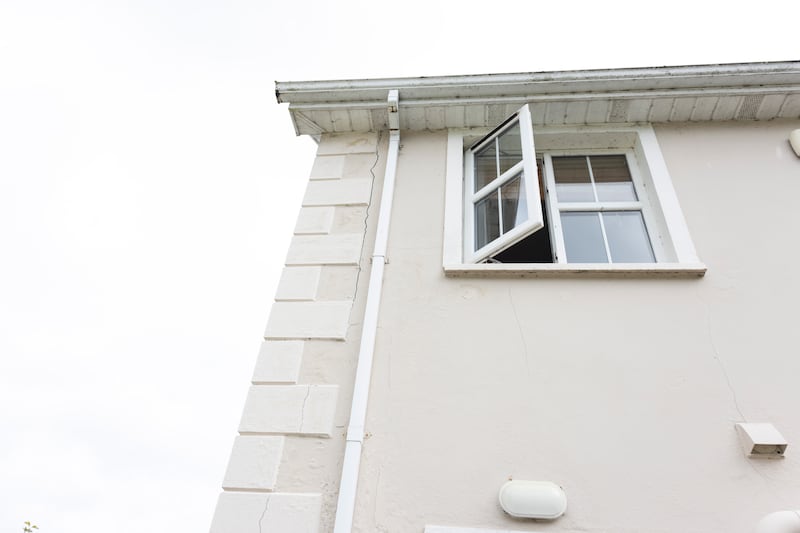
Their home, whenever it is rebuilt, will look identical from the outside. They have planned for a few small interior changes on the ground floor to include a downstairs bedroom and bathroom. “So we can live downstairs as old people,” he says, laughing. “Because I am not going through this again.”
I will happily acknowledge where my weakness and strengths are. And I’m smart enough to know that if you don’t know about something, you bring in people that do
— Paul Dunlop
There is a sacred energy to any family home. It’s a refuge. The Dunlops and hundreds like them have lost that for now. Because of the financial implications of the problem, they haven’t had a family holiday in three years.
“Holidays are trivial things. But you feel as if this thing has cheated us out of a normal life.”
When Dunlop’s mortgage provider left the Irish market, he wrote to the institution that bought the mortgage inquiring as to whether they knew that the house had been classed as failed. It was, he felt, another small, telling injustice: the purchase of a failed asset on the assumption that either way, the mortgage would be paid. It was another example of the collective feeling that despite being blameless in all of this, the unfortunate homeowners are left to fend for themselves.
Because of his profile, he has dealt, too, with his share of online anonymous trolling, “muddying the waters around my credibility in this field. I will happily acknowledge where my weakness and strengths are. And I’m smart enough to know that if you don’t know about something, you bring in people that do.”
He knows, too, that he won’t quit on this, however long it takes.
“This is wrong,” he says. “That is the motivation for me. It is clear to me that there are vested interested groups that don’t want science to show what it is showing. Because you can’t argue with science.”
A bone of political contention
Mica problems have emerged in homes in Clare, Limerick and Sligo after first surfacing in Donegal and Mayo.
Successive governments have been grappling with the issue of defective blocks caused by the presence of the mineral mica for a decade, with the current Coalition agreeing to enhance an existing scheme to cover 100 per cent of repair costs up to a ceiling of €420,000 agreed last November. The price of the scheme is €2.7 billion, but could rise higher again to as much as €3.65 billion if inflation runs consistently high.
Funding the scheme proved to be a bone of political contention last year, when the Government was forced to water down plans for a defective concrete blocks levy announced in the budget following a backlash from backbench TDs who said it would add to the cost of construction and exacerbate the wider housing crisis.
In October 2021, thousands of mica protestors marched through Dublin and the protest came to a halt beneath the windows of the Department of Housing in the city centre, where partipants demanded 100 per cent redress for homes affected by defective building blocks.
At that time, President Michael D Higgins said “acutely aware” of the “heartfelt pain and anguish” caused by the mica issue.
In response to an invitation to attend the protest, sent to his office by the Mica Action Group, the Deputy Secretary General to the President wrote that Mr Higgins has been “following developments closely and continuously raises this issue in his regular briefings with the Taoiseach”.
This summer, mica redress campaigners lodged an application to register as the newest political party in the State, promising to be a “force to be reckoned with” ahead of local elections next year. The 100 per cent Redress Party is planning to field candidates in Donegal and has officially submitted papers to the Electoral Commission.














